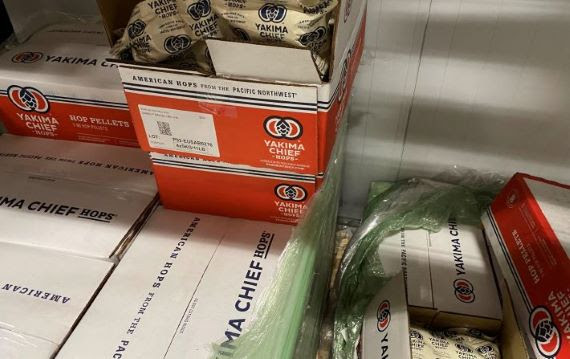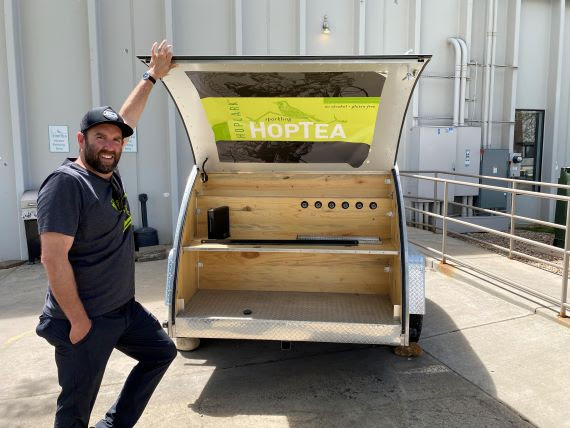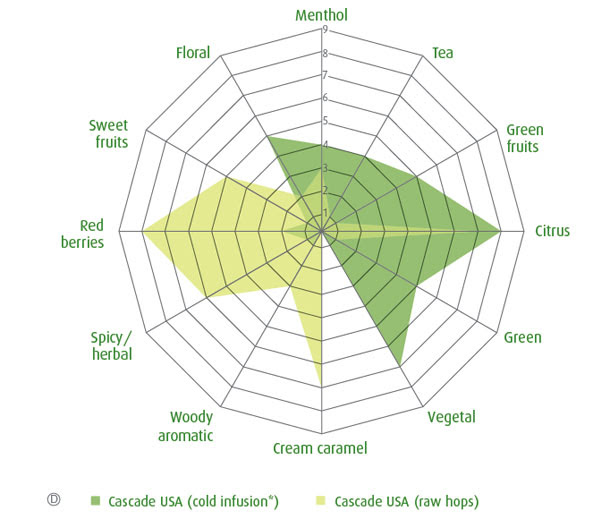Stan Hieronymus Hop Queries – May 2022 May 2022
Each month respected beer writer Stan Hieronymus produces Hop Queries, a must-read summary of what is happening in the hop world, and has kindly offered to let us publish it for Australian industry readers. If you would like to subscribe directly, you can here.
May 2022
Welcome to Vol. 6, No. 1. Pardon the atypical transmission this month. Not that I am apologizing – Daria and I began May in New Orleans at the Jazz and Heritage Festival and will finish the month in Greece.
To be honest, I hadn’t given any thought to how long I might be writing this newsletter when I started it five years ago. Probably not five years. Also, in the interest of transparency, I confess I viewed it as a foundation for another book related to hops, a companion to “For the Love of Hops.”
A book available next week may change that plan. “The Book of Hops: A Craft Beer Lover’s Guide to Hoppiness” from Ten Speed Press – a powerhouse publisher – looks quite impressive. Many people who might buy the book I envision will be served by this one. The preview (“Look Inside”) at Amazon will give you a good idea of what is included in the book and how beautifully it is illustrated.
I will be buying it. Given the interest you’ve shown in hops by subscribing to this newsletter, you may as well. I will not be reviewing it. To critique a book when I might be writing something similar (at least in the view of potential readers) feels too self-serving.
Whither Northern Brewer?
I’ll be talking about what makes a hop American and what American hops may look like in the future at Homebrew Con in June. The topic has been discussed here before and will be again. I mention it now because in toting up where each of the 50 cultivars featured in “The Book of Hops” hails from I had to pause at Northern Brewer.
Say “Northern Brewer” to a longtime American homebrewer and the conversation will probably turn to Anchor Steam. Even though the Northern Brewer hops Fritz Maytag chose to use when he reinvented Anchor Steam were a hybrid of the original Northern Brewer the variety is closely associated with the beer that jump started what some call craft brewing.
Nonetheless, E.S. Salmon bred the hop in England, German farmers harvest more than a million pounds of Northern Brewer every year, and American growers less than 100,000 pounds. Do you call her American, English or German? I went with country of origin and filed her under English.
Besides – although there is a chance I will have to amend this when I can read the 19 pages on growing regions – English hops don’t get enough love in the book. Oops, here I am starting to critique. I’ll stop and simply share the numbers I came up with and remind you that you will find the full list of 50 in the book preview. Included are 26 American hops, eight from New Zealand, seven from Australia, five from Germany (but no Hersbrucker, Mittelfrüh, Spalt, or Tettnanger), three from England, and one from the Czech Republic. You can probably guess what that last one is.
Headlines from CBC
All Access members may read my report from the Craft Brewers Conference online at Brewing Industry Guide, and it will be in print soon. The biggest news: a) Yakima Chief Hops is offering a Cryo version of its Fresh Frozen Hops, and b) Crosby Hops began showing off its new concentrated pellets, CGZ Lupulin Pellets, and announced a partnership with Hop Revolution in New Zealand. That means Nelson Sauvin, Strata and El Dorado are available in concentrated form for the first time.
Hops flavors, personalized
David Nilson recently wrote about chocolate bars infused with hops, a reminder that it is OK to use the words “nuanced” and “hops” together. I thought about this after touring Hoplark, a company that makes hop-infused teas and sparkling waters. Some of the drinks punch you in the nose with hops and some blend hop aromas and flavors with those from other botanicals.
I confess the word gimmick came to mind last month when the company announced the launch of Hoplark 0.0, Really Really Hoppy and invited me to see the plant. They are making the point that their drinks contain no alcohol and no calories. Because I’ve been buying their HopTea at my local grocery store, because hop water seems to have become a thing (there are other non-beer companies producing hop-flavored drinks, Lagunitas and Sierra Nevada have both launched national brands, and many smaller breweries have started to produce their own), and because Hoplark is being made only about a 30-minute drive from home I decided to visit.

Inside what was previously an ice cream factory, a canning line, 120-barrel tanks and a cooler with boxes of the newest in-high-demand hops piled to the ceiling look familiar. That everybody wears white lab coats, hairnets and safety glasses does not. These are needed for SQF (Safe Quality Food) certification. “We live in the FDA world,” said co-founder Dean Eberhardt.
First, some background, then back to matters of sensory.
– Eberhardt and his partner, Andrew Markley, began selling hop-infused tea four years ago at a Denver farmer’s market. Here’s Eberhardt with a trailer modified to pour their teas.

– They’ll produce more than 35,000 barrels of tea and sparkling water this year. HopLark is the second-best selling tea at Whole Foods nationwide, after Honest Tea. More than 6,000 subscribers have signed up for regular shipments (online sales are an advantage to selling a non-alcoholic beverage). As well as the core products, HopLark offers two limited releases each month.
– As a result, they are using plenty of hops, enough that they qualify to select the hops just like breweries of a certain size. They’ve already put two of the newest varieties, Talus and Nectaron, to use. Eberhardt has learned to talk the talk. “OG (onion/garlic) is so real,” he said.
– Scaling production from one barrel at a time to 120 barrels was much more linear than it would have been with beer. And buying equipment was much easier. “I’m so grateful to craft brewers for normalizing all this equipment,” Eberhardt said.
Driving home, I thought that Eberhardt could also thank brewers for making drinkers, of tea and water as well as beer, aware that hops have interesting flavors. Some cultivars are so well known that people give their names to pets, or even children. Hops did not always enjoy such cachet.
I also considered how beer and the brewing process bring out the best in hops. (See previous newsletters for the importance of biotransformation and the role synergy plays in creating and freeing odor compounds in the kettle and in the fermentation tank.)

This chart, courtesy of the BarthHaas Hop Aroma Compendium, illustrates how the perception of Cascade hops may change when they are steeped in cold water. The goal was to simulate one dry-hopping option – adding hops post fermentation, when yeast is no longer present. That’s essentially what HopLark is doing, dry hopping tea or carbonated water. This “changes” the hop, just not the same as using it in the kettle or dry hopping during fermentation.
It would be easier, and probably cheaper, for HopLark to use something from the array of advanced hop products available these days. Eberhardt does not consider that an option. “We can taste the effects of using extracts,” he said. “They digitize the flavors. (Using hops themselves) keeps it analogue.”
Obviously, the teas and waters don’t contain isomerized alpha acids and the bitterness that will result. However, without malt sweetness and alcohol to balance even a lower level of hop bitterness the drinks can taste a bit raw. (And, of course, tea adds bitterness as well.)
“When you take away the sweetness the taste become so personalized,” Eberhardt said.
Perhaps because I already know the aroma of hops in the raw so well the HopLark drinks I’ve most enjoyed are the ones that blend botanicals with hops. Those include The Thai Basil One, of course made with Thai basil, then spiced with Comet hops, and The Sprucey One. The second is flavored with spruce tips foraged in Colorado and understated Sabro (two words you seldom see together) hops. In this case, the coconut and berry flavors in Sabro blend pleasantly with the spicy, citrussy spruce tips.
Topics to explore?
Thank you for subscribing. If you have queries you’d like to see addressed drop me a line at stan@appellationbeer.com

